Bass Harmonics: Middle of the String Harmonics
We’ve found where the most common harmonics are at the end of the fingerboard, and also toward the nut. Today, let’s find the most common harmonics in the middle part of the string.
In the examples below, the lower staff tells us where to put place our fingers and find the harmonic. The upper staff tells us the sounding pitch of that harmonic.
For example, if we play a harmonic where C is located on the G string we get a G two octaves above the open string:
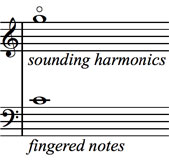
Starting with harmonics in the middle section of the G string:
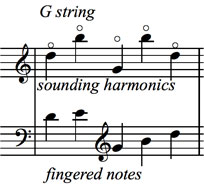
Notice that the five harmonics result in only three pitches. This is a result of the “mirroring” effect mentioned previously. As an illustration:
- Use the middle point of the string as our starting point
- in this case G at 12th fret…if you had frets.
- Travel a specified distance in one direction; say about two inches toward the bridge.
- The harmonic you find will find there is a B, the fourth note in our example above.
- Go back to the middle point of the string.
- Travel the same distance you traveled previously (about two inches) from our starting point (middle-string G), but this time in the opposite direction (toward the nut).
- Here you will find the same harmonic as before, a B. Notated as the second note in our example above.
Using the same placement as before, we find the following harmonics on the D string:
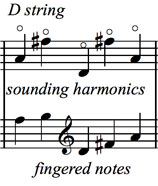
On the A string:
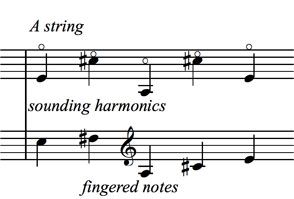
And on the E string:

You should now be fairly confident of where the most commonly used harmonics lie at the nut, at the end of the fingerboard and in the middle of the string. Enjoy our upper register!
Be sure to check out all of the installments in this bass harmonics series.
Dr. Donovan Stokes is on the faculty of Shenandoah University-Conservatory. Visit him online at www.donovanstokes.com and check out the Bass Coalition at www.basscoalition.com.

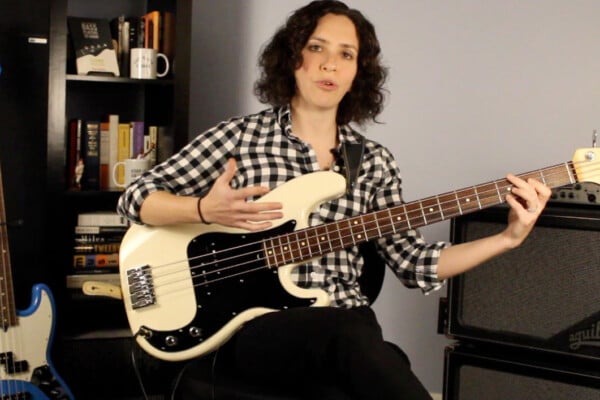
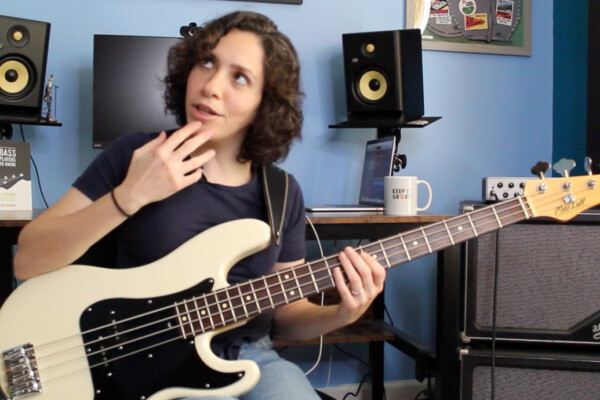

This may be a bit nit-picky, but if the bass sounds one octave lower than written, would not then the sounding harmonics be one octave lower than written here?
HI. Both the treble clef and bass clef notes above are written in standard bass notation….sounding pitch one octave below the written pitch in both cases.